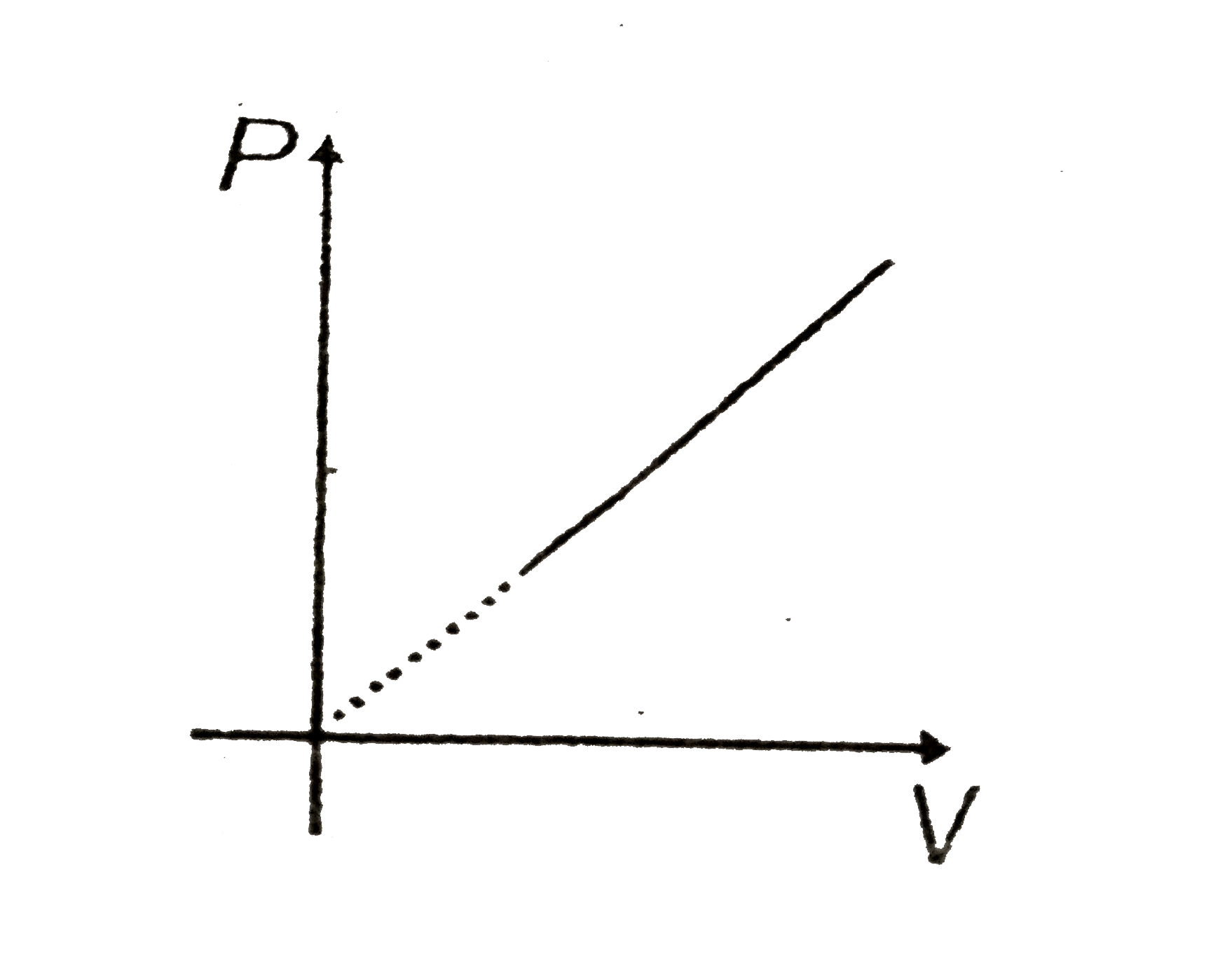The relation between the internal energy (U) versus temeperature (T) for a 3 mole ideal gas in an isochoric process is given as where and are constant. If the specific heat capacity of the gas for above process is find the value of m.
The correct Answer is:3
To solve the problem, we need to analyze the relationship between the internal energy (U) and temperature (T) for a 3-mole ideal gas in an isochoric process, where the internal energy is given by the equation:
U=α+βT
Here, α and β are constants.
Step 1: Understand the Isochoric Process
In an isochoric process, the volume of the gas remains constant. This means that no work is done on or by the gas, as work done (W) is given by:
W=PΔV
Since ΔV=0, we have W=0.
Step 2: Apply the First Law of Thermodynamics
The first law of thermodynamics states:
ΔU=Q−W
Since W=0 in an isochoric process, we have:
ΔU=Q
This means that the change in internal energy is equal to the heat added to the system.
Step 3: Differentiate the Internal Energy Equation
To find the specific heat capacity, we need to differentiate the internal energy equation with respect to temperature (T):
dUdT=ddT(α+βT)=β
Step 4: Define Specific Heat Capacity
The specific heat capacity at constant volume (CV) is defined as the amount of heat required to change the temperature of the gas by one degree per mole. Mathematically, it can be expressed as:
CV=QnΔT
For an isochoric process, we can express the heat added as:
Q=n⋅CV⋅ΔT
Step 5: Relate Heat to Internal Energy Change
From our previous step, we know that:
Q=ΔU
Thus, we can write:
ΔU=n⋅CV⋅ΔT
Substituting ΔU with βΔT:
βΔT=n⋅CV⋅ΔT
Step 6: Cancel ΔT and Solve for CV
Assuming ΔT≠0, we can cancel ΔT from both sides:
β=n⋅CV
Step 7: Substitute for CV
We are given that the specific heat capacity for the gas is:
CV=βm
Substituting this into our equation gives:
β=n⋅βm
Step 8: Solve for m
Rearranging the equation, we have:
m=n
Given that n=3 moles (as per the problem statement), we find:
m=3
Final Answer
Thus, the value of m is:
3
In an isochoric process, the volume of the gas remains constant. This means that no work is done on or by the gas, as work done (W) is given by:
The first law of thermodynamics states:
To find the specific heat capacity, we need to differentiate the internal energy equation with respect to temperature (T):
The specific heat capacity at constant volume (CV) is defined as the amount of heat required to change the temperature of the gas by one degree per mole. Mathematically, it can be expressed as:
From our previous step, we know that:
Assuming ΔT≠0, we can cancel ΔT from both sides:
We are given that the specific heat capacity for the gas is:
Rearranging the equation, we have:
Thus, the value of m is:
Similar Questions
The relation between internal energy U, pressure P and volume V of a gas in an adiabatic processes is : U=a+bPV where a = b = 3 . Calculate the greatest integer of the ratio of specific heats [γ] .
View SolutionThe temperature (T) of one mole of an ideal gas varies with its volume (V) as T=−αV3+βV2, where αandβ are positive constants. The maximum pressure of gas during this process is
View Solution
Knowledge Check
- Question 1 - Select One
The relation between internal energy U, pressure P and volume V of a gas in an adiabatic process is
U=a+bPV where a and b are constants. What is the effective value of adiabatic constant γ ?A1. abB2. b+1bC3. a+1aD4. ba
The relation between time t and displacement x is t=αx2+βx, where αandβ are constants. The retardation is
View SolutionEnergy due to position of a particle is given by, U=α√yy+β, where α and β are constants, y is distance. The dimensions of (α×β) are
View SolutionTempareture and volume of one mole of an ideal momatomic gas in a process are related as TV23=K ,where k is constant.The molar specific heat capacity for the process is
View SolutionOne mole of an ideal monatomic gas undergoes the process P=αT1/2, where α is constant . If molar heat capacity of the gas is βR1 when R = gas constant then find the value of β.
View SolutionOne mole of an ideal monatomic gas undergoes a process described by the equation PV3= constant. The heat capacity of the gas during this process is
View SolutionFind the value of molar heat capacity for an ideal gas in an adiabatic process.
View SolutionThe variation of pressure versus volume is shown in the figure. The gas is diatomic and the molar specific heat capacity for the process is found to xR. Find the value of x.
 .View Solution
.View Solution

